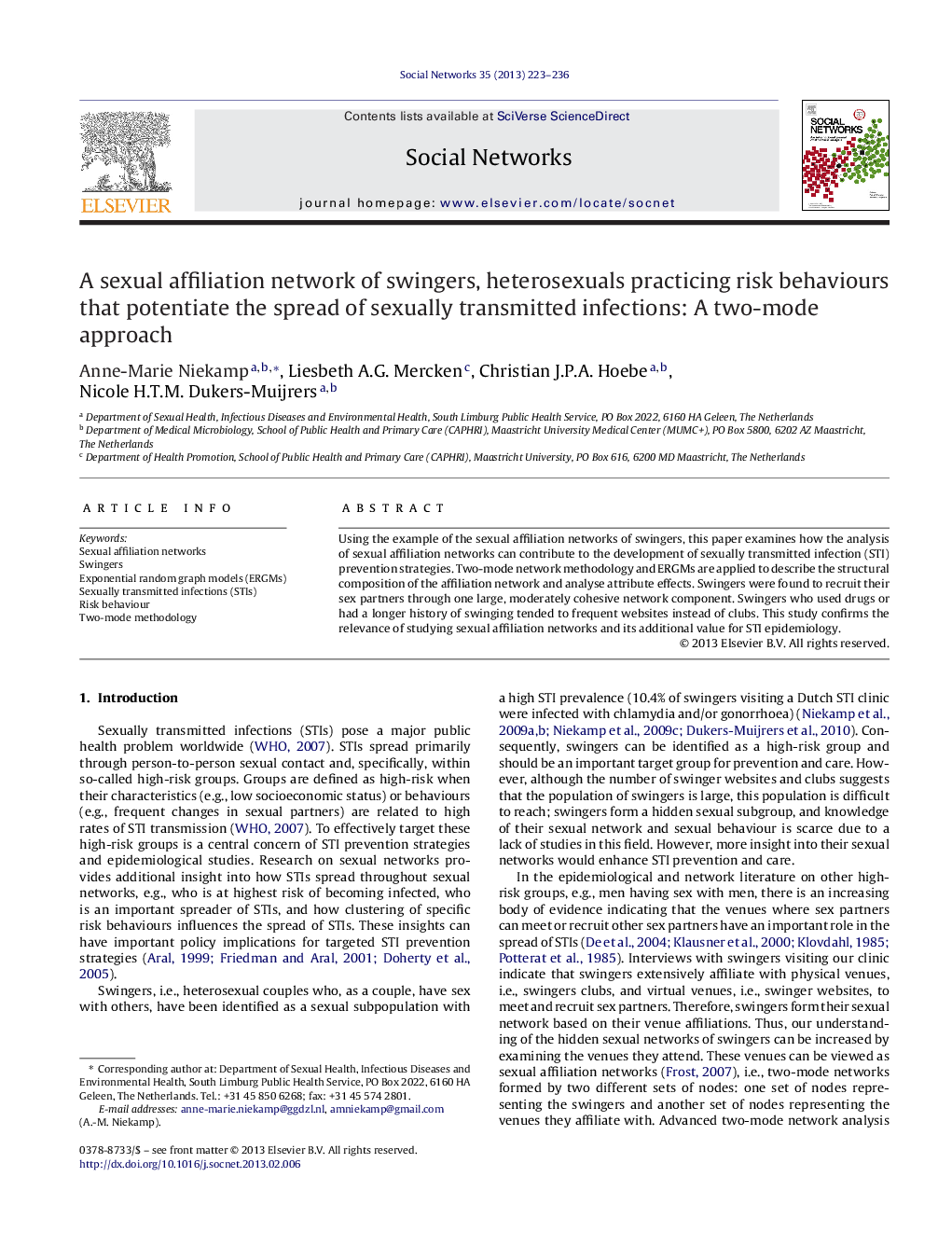| Article ID | Journal | Published Year | Pages | File Type |
|---|---|---|---|---|
| 1129308 | Social Networks | 2013 | 14 Pages |
Using the example of the sexual affiliation networks of swingers, this paper examines how the analysis of sexual affiliation networks can contribute to the development of sexually transmitted infection (STI) prevention strategies. Two-mode network methodology and ERGMs are applied to describe the structural composition of the affiliation network and analyse attribute effects. Swingers were found to recruit their sex partners through one large, moderately cohesive network component. Swingers who used drugs or had a longer history of swinging tended to frequent websites instead of clubs. This study confirms the relevance of studying sexual affiliation networks and its additional value for STI epidemiology.
► We analysed the sexual affiliation networks of swingers to inform STI prevention. ► Swingers recruit sex partners through one large network component. ► The network structure increases the potential of STI to spread through the network. ► Swingers who used drugs tended to affiliate with websites instead of clubs. ► Using two-mode network methods have additional value for STI epidemiology.
